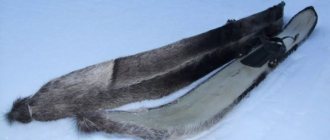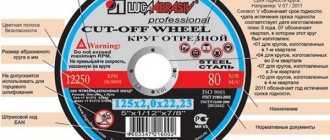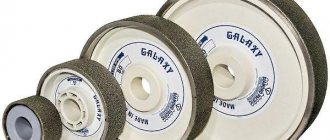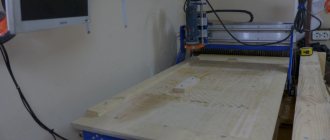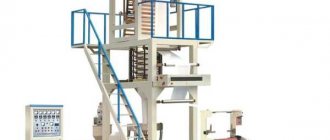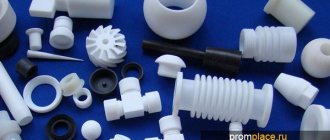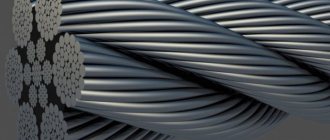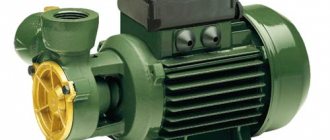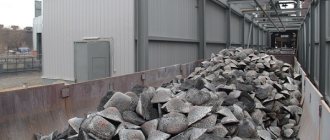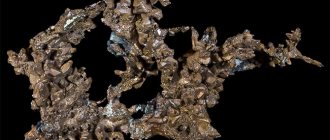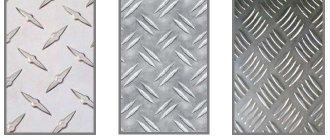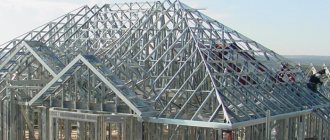Diamond cutting discs are circles made of hardened high-quality steel processed in accordance with a special technology, the edges of which are coated with a diamond cutting edge. Compared to conventional abrasive tools, diamond wheels have significant advantages in terms of productivity, service life, cutting accuracy, speed, and cleanliness of processing. This type of cutting is the most silent, and the diameter of the circle practically does not change, so the linear rotation speed remains unchanged.
Machines and tools that use diamond blades:
- Angle grinders – angle grinders;
- petrol cutters;
- wall chasers, furrow makers;
- slot milling machines;
- stone cutting machines;
- cutting machines, etc.
Diamond blades are used for both dry and wet cutting of material.
Dry cutting
For the dry method, discs are used in which air passing between the segments is used to cool the tool. The technology should ensure dust removal, which increases productivity and facilitates work. However, such cooling is not enough, so it is necessary to take breaks to cool the diamond wheel.
The dry method is used when performing work in rooms with laid communications, in cases where the use of water is impossible. Discs designed for dry cutting can also be used for wet cutting, but not vice versa.
Main advantages and disadvantages
Diamond cutting discs are a universal tool. They are suitable for cutting not only metal, but also other materials of increased hardness: brick, reinforced concrete, foam concrete and others. The advantages of this tool include:
- increased geometric cutting accuracy;
- flat surface;
- almost silent operation.
The diamond blade does not exert pressure on structures adjacent to the cutting surface and does not change the structure of the material during operation. At the same time, significantly less time is spent on completing the work than when using other tools. The diamond wheel operates in the absence of a flow of sparks, and, as a result, there is no burning smell.
The cost of work using diamond blades should be calculated for each specific job.
The disadvantages of such a device include its high cost, but the working life of a diamond cutting tool significantly exceeds (almost 70 times) the working life of abrasive discs performing the same work. Equipment downtime is reduced by reducing the frequency of tool replacement. When using active cooling, it is possible to increase rotation speed and productivity. Throughout its service life, the tool retains its geometric characteristics.
Wet cutting
The dry cutting method involves the use of continuous, solid circles. Material processed in this way does not chip. The wet method is more convenient, since water not only cools the surface of the disk, but also cleans the work area, removing dust and fragments of the material being processed.
Universal diamond blades are also available, designed for both wet and dry cutting.
Diamond cutting wheels differ in purpose, type of cutting edge, method of fastening the segments, composition of the segments and other characteristics.
Features of application
After purchasing diamond or other discs for an angle grinder, it is important to familiarize yourself with the list of materials for which they are intended. In order not to forget what materials they are intended for, it is recommended to save the packaging until the products are disposed of.
It is necessary to install the product into the tool using a special fixing key. If, after installing the wheel in the seat of the angle grinder, it begins to rub against the cover, then it is prohibited to start the device. Various types of work with angle grinders should be carried out using protective equipment: goggles, a respirator or mask, gloves and special clothing.
It is important to pay attention! When working with an angle grinder, the tool should be held with both hands, as strong vibrations occur during its operation.
When cutting granite or concrete, it is recommended to use the wet method. This will not only eliminate the occurrence of dust, but will also allow the cutting disc to cool during operation. Both methods can be used to cut stone, marble or ceramics.
Cutting edge type
Segmental
Designed for quick dry cutting of asphalt, wet concrete, ceramics, reinforced concrete, granite, natural stone, brick. The cutting edge of such products is divided into separate segments, between which there are grooves that remove heat. The shape of the grooves depends on the material the blade is intended to cut. So, to work with asphalt, a wide gap is required. Smaller segments reduce vibration and promote better cooling.
The diamond segments on the discs are secured by laser welding. Used for work requiring greater speed and productivity, but with low requirements for cutting accuracy
With continuous edge
They do not have cutouts on the body and are intended for work that requires the most precise cutting. The speed of work on disks with a solid edge is lower than that of segmented ones, but the resulting cuts are very smooth, and the edge has no defects or chips.
Used on stationary and mobile machines. Divided into two subspecies:
- for wet cutting – used only in stationary tools;
- for dry cutting - in hand-held and stationary tools (grinders, etc.).
Used for cutting ceramic tiles, glass, marble, tiles, artificial and natural stone, and other fragile materials.
Turbo
Used for wet and dry cutting. They have a wavy cutting edge and holes that provide additional heat dissipation. Used for processing concrete, granite, paving slabs, brick, building stone. They provide a clean edge; when cutting reinforced concrete, they react differently to pieces of reinforcement than other types of discs, so it is best to use these discs for cutting such material. Soft cutting allows you to get edges without chipping, so processing porcelain stoneware, stone slabs and ceramic tiles is allowed.
Improved versions of Turbo discs: Wave, Super-Turbo, Turbo+ - their wave-shaped, rather than flat, shape improves cooling and emission of dust and other cutting products.
Turbo segment
Turbo segment discs have a wavy edge and special ventilation holes in the body. Combines the advantages of segment and turbo cutting-off diamond wheels. Provides fast cutting with a clean edge.
The distribution of diamonds in the cutting edge also affects the scope of application of the discs. Diamonds can be distributed in a conventional or sandwich manner. With conventional distribution, the diamond component is applied evenly, with sandwich distribution it is calculated. In addition, fine-grained diamonds are used for processing hard materials, and coarse-grained diamonds for soft ones.
Rare types of diamond cutting discs
- Rare types also include discs intended for wall saws.
- As well as cutting diamond discs, which are used for cutting metal.
- Various diamond cutting wheels.
- Diamond blades that are designed for cutting pipes made of different materials.
- And the discs that are used in dentistry are used for a variety of jobs.
- Diamond wheels, which are used for cutting reinforcement, reinforced concrete, etc.
Coupling is performed in one of several ways:
- silver soldering circle;
- sintering;
- laser welding;
- galvanic method.
Silver solder
Used for large diameter diamond blades intended for wet cutting on stationary machines - the segment without constant cooling quickly disappears. The solder connection is not heat-resistant, but the cutting part damaged in individual segments can be restored.
Sintering
Pressed polymetallic powder containing diamonds is sintered under pressure with the disk blade at a temperature of 700-1000°C. This is how complex disk segments of medium and small diameters are manufactured. The method increases the service life, but increases the price of the product.
Laser welding
The most durable mounting method. These discs are used for both dry and wet cutting. When dry cutting, the disc is not damaged and retains its shape.
Galvanic method
With this method of fastening diamonds, only one layer can be applied, which prevents the disc from self-sharpening. But the number of cutting elements can be large, and this allows for extremely precise and clean cuts. The technology is used in the production of diamond cutting discs used when working with materials of low hardness.
The size, quantity, quality and method of arrangement of diamonds, the specific composition of the binder - all this determines the combination intended for processing a particular material.
The work of a diamond cutting disc is not cutting, but grinding and crumbling the material being processed. Diamond crystals are held in place by a metal lattice and a binder. When they are ground down, the stones crack and fall out. There is a direct relationship between the hardness of the material and the service life of the disc. With optimal selection of segment and material, a balance between resistance and cutting properties is maintained. As a result, the crystal is used until it is completely destroyed, and then a new, exposed diamond comes into play.
Discs for cutting dense materials must have a soft, quickly crumbling grid. At the same time, the diamonds will just as quickly replace each other, and the segment remains operational as it is ground down. In blades used for cutting soft materials, the grid is resistant to abrasion and the diamonds last longer.
The same factor ensures the correct selection of the bond between which the diamonds are distributed. The bond can be hard (steel and cobalt fills the gaps), soft (including bronze) and medium (tungsten carbide).
A soft binder is used in discs processing hard surfaces - its use when working with soft material leads to accelerated consumption of the segment. Used when cutting granite, reinforced concrete, hard metals.
A solid binder, on the contrary, is intended for processing soft materials: clothes, silicate, asphalt, etc.
For each disk there is a specific marking that describes its characteristics. Some manufacturers indicate in the labeling the type of material for which it is intended for processing:
- B – concrete cutting;
- U – universal diamond discs;
- M – discs for cutting hard materials and marble;
- F – processing of ceramic tiles;
- A – cutting asphalt;
- P – professional diamond discs;
- PP – circles of the highest class;
- PE – inexpensive professional discs.
What you need to know when choosing a diamond blade
When choosing diamond wheels for an angle grinder, you first need to decide for what work you plan to use the product. Each manufacturer indicates on the product packaging what types of materials it is intended for.
It is important to pay attention! To extend the service life of the product, operating conditions must be observed.
Working with an angle grinder with a diamond wheel attachment
When choosing a product, it is important to pay attention to the following criteria:
- Disc diameters. All grinders have standard sizes for installing the corresponding circles. To purchase a wheel for your tool, you should find out the size for which the device is intended. You can see it on the packaging with the tool.
- Internal mounting diameter of the disk. This diameter is also called the landing diameter, since the quality of fastening depends on it. The standard value is 22 mm, but some models of angle grinders may have other diameters. Details can be found on the packaging of the instrument or in the instructions.
- Disk structure. If you plan to work with soft materials, then it is better to use products without teeth. When sawing concrete, it is better to choose a blade with teeth
- Quality. The quality of the device is indicated by its price. A good diamond-coated disc will not cost less than 500 rubles. A quality product will be packaged in an appropriate paper case, which contains the necessary information for the buyer
- Manufacturer. The number of manufacturers today is still large, so it makes no sense to analyze the quality of products from certain companies. If you plan to purchase a disk for professional use, then preference should be given to companies such as Makita, Diamantwerk, Norton, VULKAN and others
Classification of discs according to processed materials:
- Class 1: concrete, building materials, paving and clinker slabs, brick.
- Class 2: roofing tiles, abrasives, cinder blocks, concrete, sandstone, brick.
- Class 3: reinforced concrete, granite, other hard materials.
- Class 4: wall and floor tiles, ceramic tiles, concrete tiles, slate.
- Class 5: hard and abrasive concrete, plaster.
- Class 6: highly abrasive materials, fresh concrete, asphalt.
The body is made of low-carbon high-quality steel and does not deform at high temperatures; the cutting edge is laser welded - this increases service life and improves productivity.
Combines reliability when working with abrasive materials and high speed of work.
Diamond granules are coated with a layer of alloy metal, the body is made of low-carbon steel;
High concentration of diamond chips, solid edge discs, used for dry cutting only.
Optimal for sampling concrete, making holes, seams and cuts.
Designed for light floor saws, hand-held gas cutters and other mechanisms, used in dry cutting.
Color marking of disks is also accepted, in which each color indicates the material for which the equipment is made:
- green color – granite;
- blue – marble and concrete;
- orange – brick;
- yellow – alabaster, tiles;
- gray – ceramics.
Scope of application
Diamond blades are widely used to perform cutting, sharpening or grinding operations on hard non-metallic and metal surfaces. They are used as accessories for:
- tile cutters;
- angle grinders;
- petrol cutters;
- wall chasers;
- stone cutting machines;
- cutting machines and other equipment.
Diamond blades are available for dry and wet cutting. A tool designed for dry cutting is more convenient to use, but requires dust removal and respiratory protection measures during operation. It can be used for both dry and wet cutting. The opposite option (discs with a wet cut for a dry cut) is unacceptable and leads to rapid failure of the tool. The tool is produced with recommendations for use for a specific type of material; there are highly specialized and more universal ones. Manufacturers offer discs designed to work with concrete, asphalt, ceramic tiles, metal and other materials.
The specialization of the disc is influenced by the type of binder and the shape of the working surface - solid, turbo or segmented. The choice of binder determines the heat removal and renewal of the cutting edge. To work with dense, hard materials, a softer binder is selected, which allows the release of a new layer of diamond chips when the previous one is abraded.
Working with a grinder on porcelain stoneware
Porcelain stoneware is a popular material in the decoration of buildings due to its high strength. The advantage of the material during its processing turns into a disadvantage. Tiles are difficult to cut and quickly wear out the tool. Cutting porcelain tiles without chipping is a real art.
We cut porcelain tiles
Of course, you can purchase an industrial tile cutter and not have any worries. This machine is called a “wet cutter” because liquid cooling is used during operation. This solution is suitable for construction teams.
Cutting porcelain tiles with water using a wet cutter
For home use, buying such equipment is too wasteful. Moreover, with due care, you can get by with a household grinder and a high-quality disc - a dry cutter.
Disc for cutting porcelain stoneware without water - dry cutter
The diamond cutting wheel for porcelain stoneware must be solid, non-segmented. Its thickness is as minimal as possible, just to ensure the strength of the disk. Some tricks from experienced professionals:
- The direction of movement of the grinder must coincide with the direction of rotation of the disk. Otherwise, the number of chips increases sharply.
- Since it is impossible to achieve a complete absence of chips, it is better to make the cut not along the marking line, but with an indentation of 1-2 millimeters. The remaining material can be removed using a stone grinding disc. If the cut is not specific, this rule can be neglected.
- The cut must be done in one pass. With each subsequent passage, the number and size of chips increases.
What are the different disk sizes?
Diamond disc FB/M d 125 mm for concrete and highly reinforced concrete.
Depending on the possible cutting depth, there are discs of different diameters. Models with diameters of 115, 125, 180 and 230 are most often used. They are suitable for home use and do not require the purchase of more massive angle grinders. Wheels with diameters 110 – 240 can be used by both professional and household angle grinders (“grinders”).
A diamond blade for reinforced concrete from 150 to 350 mm is used for machine cutting, which is not suitable for use at home. They can make cuts to significant depth.
Diamond blades from 350 to 500 mm are used for cutting asphalt, and over 500 mm - for wet cutting. It is important to remember that for each product there is a specific marking that describes the maximum rotation speed and the type of material being processed. If you ignore the instructions, overheating and deformation of the disk may occur.
It is important to remember that there are different diameters of the mounting hole:
- circles from 155 to 230 mm have a hole of 22.2;
- diamond disc for reinforced concrete from 150 to 350 – hole 25.4 mm or 30.0;
- 300 and above – 25.4.
Return to contents
Tips on how to extend service life
What type of diamond blades do you work with most often?
SolidSegmented
There are a few simple tips to ensure that a newly purchased cutting wheel lasts as long as possible and works out the entire amount spent on it:
- Discs with a larger wheel diameter will work longer because they have a low load on the cutting crystals (but remember that the size of the wheel must be selected according to the type of mechanism!).
- The more powerful the tool, the more stable its speed, thus the disc wears out less.
- Choosing the right disc type for the material.
- Never exceed the permissible speed.
The best diamond blades for metal
Metal cutting is one of the most common operations on a construction site. Manufacturers produce wheels with additional cooling for this work. The cutting edge has a small height, and artificial diamonds are applied using laser welding, soldering or using galvanization technology. The variety of models is due to the need to work with different grades of steel. Our team has tested 8 wheels and offers 3 types of equipment, which are distinguished by the quality of metal processing and good service life.
Hammer 206-232
The complex segment structure of a diamond cutting disc for metal allows one to effectively compensate for thermal expansion. The circle is made of high-quality tool steel and has an ideal geometry that eliminates beating and chipping. The equipment can be used for wet cutting; in the absence of a specialized tool, it is recommended to remove the disk from the cut every 3 minutes for forced cooling. This will provide the necessary level of security.
The cutting crystals are held on the surface by a wear-resistant bond that is resistant to elevated temperatures. The edge height has been increased by 30% compared to analogues, which has helped to increase service life and productivity. The consumable material belongs to the professional series, the service life is calculated taking into account the high intensity of use.
Advantages:
- You can work with different grades of steel;
- Versatility - works well on ceramic tiles and concrete;
- Uniform distribution of crystals;
- Minimum number of sparks;
- High performance.
Flaws:
- High price.
DeWALT DT40252
Professional diamond cutting disc designed for working with rebar, stainless steel, cast iron and non-ferrous metals. According to user reviews, it cuts any metal equally accurately. The design is segmental, with effective heat removal during operation. The cutting crystals are applied using a patented technology, which reduces wear on the cutting edge. The wheel is designed for at least 1000 cuts, which is 30 times more than when using abrasive cutting discs.
Design features ensure stable cutting depth and accuracy, as well as comfort during operation. The equipment makes it easy to operate the tool. During operation, less unpleasant odors and dust are released, increasing safety. You can equip the consumables with a UGM or a cutting saw.
Advantages:
- Small thickness – 1.3 mm;
- Ten segments;
- High strength of steel;
- Light weight.
Flaws:
- Not detected.
Fubag Slim Fast 80125-3
German engineers have developed a high-performance turbo disc to operate at 15,200 rpm. This is one of the best indicators in its category. The small thickness allows you to make a neat cut of any metal using dry cutting. Design features allow excess heat to be effectively removed, and holes in the sheet steel prevent overheating during intensive work.
Increasing the cutting edge height to 10 mm had a positive effect on the service life. Promotes long service life and uniform distribution of diamonds in the structure. The cutting part does not become clogged with intensive use. The circle has good strength and heat resistance.
Advantages:
- The fastest cut;
- Universal application;
- No vibration during operation;
- Very thin cut.
Flaws:
- Overcharge.
Recommendations for selection
The main criterion is the compatibility of the diamond wheel with the working tool and the selected cutting technology
It is important to understand the principle: the diameter and rotational speed of the disks cannot be greater than that allowed for the existing wall chaser or grinder; products for wet cutting are not used in the absence of supplied water; the opposite situation is permitted. Diameters and methods taking into account the type of construction tool are given in the table
| Type of equipment | Diameter, mm | The optimal method for cutting concrete | |
| Outer | Landing | ||
| Hand cutter | 300-400 | 25,4 | Both ways |
| Cutting machine | 500 | 60 | With continuous water supply |
| Grinder or wall chaser | 115-230 | 22,23 | Dry cutting |
The indicated values are average and recommended; to eliminate errors when choosing diamond blades, the following are consistently taken into account:
1. Density and abrasiveness of concrete. Freshly hardened solutions wear out wheels faster and require the use of thicker cutting tools, especially if they contain coarse-grained quartz sand, granite or basalt. When processing reinforced and high-density materials, it is worth choosing diamond discs for reinforced concrete with silver soldering. The minimum recommended thickness of products is 2 mm.
2. Intensity of operation. For one-time work, products with an affordable price and average wear resistance are purchased, for professional ones - designed for a long service life, with high quality and a percentage of diamond chips.
3. Type of working equipment and the presence of a water cooling system. Disks for hand-held power tools have a segmented or turbocharged design and are used mainly for dry cutting; continuous water supply is provided in professional machines.
4. Required cutting depth, this factor is influenced by the diameter of the circle. A large value (above 350 mm) is required when working with volumetric structures and wall blocks, when processing slopes, openings or window lintels - in the range of 150-230, when carrying out internal repairs (grooving for wiring, laying small channels) - 115-120. The upper limit depends on the parameters of the working tool; the diameter of the diamond wheel for a wall chaser (it should be remembered that there are two of them) varies from 110 to 365 mm, for an angle grinder – 230 mm.
5. Dimensions of the mounting hole. When processing concrete, the recommended minimum is 20 mm.
6. Disc quality, manufacturer reliability. Good professional discs for reinforced concrete are offered by Bosch, Keos, Hilti, Distar, acceptable products include products from Zubr, Metabo, Norton, Matrix and many others
Attention is paid to the thickness and method of spraying the diamond layer; for long-lasting discs, the crumbs are distributed throughout the entire volume of the cutting part
7. Maximum permissible disk speed. This figure cannot be less than that of a working tool.
Cost of nozzles
| Name, manufacturer | Type, purpose | Cutting method | Maximum rotation speed | Thickness, mm | Landing diameter, mm | Disc diameter, mm | Price, rubles |
| Special, China | Segmented diamond cutting disc | dry | 6600 | 2,4 | 22,23 | 230 | 825 |
| Hilti DC-D | 12250 | 2 | 125 | 630 | |||
| Jet Norton Granite, Poland | Solid with a wavy turbine edge, cutting reinforced concrete is allowed | 13300 | 2,2 | 115 | 430 | ||
| Metabo, Germany | Solid diamond disc with welded diamond edge | wet | 12200 | 2,15 | 125 | 425 | |
| Keos Professional, South Korea | Segmented, high tooth frequency | Both ways | — | 3,2 | 25,4 | 230 | 9560 |
| Anchor Expert, Russia | Turbocharged, for cutting reinforced concrete | dry | 12900 | 2,2 | 22,23 | 125 | 710 |
| Iterskolar Era, China | With a turbo edge with a diamond concentration of more than 30% | 6600 | 2,5 | 230 | 1140 | ||
| Bosch Best for Concrete, Germany | Diamond wheel for grinding thick layers of concrete | — | — | 4,5 | 125 | 11200 |
How to choose a drive
It should be remembered that the cleanliness of the cut depends on the material selected in accordance with the strength of the bond and the type of cut (dry, wet or mixed). Thus, a granite disc is suitable for dry cutting. Discs for dry processing can also be used for wet processing. But not the other way around. This is an important rule.
When choosing a diamond cutting tool, you need to study the following:
- Disc diameter and seat diameter (must match the tool used).
- The maximum number of revolutions above which the tool will not work and will become unusable.
- Pictograms with safety measures.
- An indication of the type of cut the product is used for. As a rule, there are special symbols on the packaging. For example, a drop or a tap means a wet cut; if they are crossed out, it means a dry cut. Two droplets, one of which is crossed out and the other is not, indicate the possibility of application for different types of cuts.
- Material you can work with. The main material and additional material may be specified, for which the disc is also suitable, but the efficiency and quality may be lower. Some manufacturers provide information listing materials, their properties and suitable discs.
Description and classification
A diamond disk is a metal circle of small thickness with cutting diamond plates fixed on the edges. They are made from industrial ground diamonds, which are pressed into a metallic binder - carbide, steel or titanium. The plates are attached to the disks using silver soldering or laser welding. Modern technologies connect the cutting tool to a metal base using powder soldering. This way they last longer. Once the cutting part of the diamond blade has been sharpened, it is completely ready for use.
In order to cut reinforced concrete or concrete, a variety of equipment is used, such as stationary machines, wall chasers, gas cutters, and grinders. Different brands of circles are attached to them. Their distinctive features are:
- Working edge configuration.
- Composition of the binder.
- Number of diamonds per unit area.
- Quality indicators of diamonds.
To choose the most suitable option for you, you need to familiarize yourself with the classification.
Circles are divided into groups according to several criteria. The most important indicators are: the purpose and shape of the cutting part.
Diamond cutting discs
This group is divided into three subspecies. These include:
- Segmental for dry cutting. Concrete is cut dry using hand tools. For these purposes, a grinder (angle grinder) and a wall chaser are used. On the base of the segmented circle, the diamond contour is located in the form of separate sectors, and between them there are radial through grooves. During the cutting process, the plates experience heavy loads and the discs heat up. The slots are necessary to relieve stress in the cutters, remove waste, remove heat and compensate for linear expansion. This group includes diamond tools for cutting fresh concrete. The difference between such circles is that they can be used to cut material immediately after hardening. The diamond layer is usually filled directly onto the body without using a binder.
- Infinite (whole). There are no segments on such circles. And in order to distribute the tension, there are holes. They are used when cutting is carried out with water cooling. Wet processing is carried out on stationary equipment. Such equipment has the design ability to supply coolant.
- Diamond discs for reinforced concrete. These discs have a segmented design, but the teeth contain more diamonds than a conventional disc type. They are a little thicker. It is necessary to take into account the fact that reinforced concrete is very difficult to cut at home. The grinder heats up quickly, dust penetrates inside it (to prevent dust from penetrating, dust protection for the bearings and a dust-proof motor are necessary). Using a hand-held power tool, it will be possible to cut reinforced concrete no deeper than 10 centimeters in one go. After this, the equipment will turn off to cool the disk and motor.
- Turbo segment diamond cutting wheels. They are solid, and their cooling is carried out due to the wavy surface. Their price is higher than regular circles, but they compensate for these costs with expanded functionality and a long service life. They can even cut reinforced concrete if the diameter of the reinforcement does not exceed 10 centimeters.
Diamond grinding discs
These wheels are used to grind concrete if it is necessary to level the floor before applying a decorative coating. This process is carried out with a special grinder or grinder. Grinding wheels differ in that the cutting diamond layer is applied to a conical annular surface that protrudes along the edge. A diamond disk for mechanical floor processing is a main circle on which several grinding cups are attached, between which there are grooves for removing dust.
Tool selection
When purchasing a circle for an angle grinder, many factors are taken into account that determine the final choice. Each individual case requires an individual approach. The main conditions on which the characteristics and optimal dimensions depend are:
- Material. Most often, ordinary concrete is processed with segment tools for dry cutting. The new concrete surface has a high level of abrasiveness. This causes rapid wear of the discs. For such work, it is better to purchase thicker discs. Old concrete is stronger than young concrete, so it is better to use options of moderate thickness. If the cement-sand mixture includes quartz sand or balsate, then the abrasiveness of the concrete goes off scale. It is better to choose options where diamond plates are soldered with silver to the base. If you need to cut reinforced concrete, granite or concrete, then a soft diamond wheel is used.
- Cutting method. Wet technology allows cutting reinforced concrete and concrete accurately and quickly, avoiding dust and overheating of the tool. But before purchasing solid discs, you need to make sure that the cutting equipment has a cooling system. For dry cutting, buy segmented circles.
- Working conditions. For home use, products with the optimal ratio of quality and price are selected. They will be able to cope with reinforced concrete and medium-reinforced concrete. If you use them periodically and avoid overloading, they will last quite a long time. Professional discs are designed for continuous use. They have increased durability and wear resistance. Distal and Bosch companies produce the best samples. Such products must be purchased strictly for their intended purpose: concrete cannot be cut with a disk on marble.
- Equipment and cutting depth. The deeper you need to make the cut, the larger the diameter of the circle should be. At the same time, you should not forget about the capabilities of the device. If you attach a disk that is too large, its linear speed will be very high, which will lead to rapid wear. And if you put on a small one, the car will heat up and slip. For powerful wall saws, diamond circular saws are produced, the outer diameter of which should not exceed 1200 millimeters. To work with large-sized foundation blocks and concrete elements, machines with a working diameter of 350-400 millimeters are needed.
Circles for hand-held power tools have more modest dimensions. For cutting concrete when renovating a room, products with a diameter of 115-120 millimeters are used. To process lintels in openings, slopes and other elements, grinder discs for reinforced concrete and concrete are used, the diameter of which is 150-230 millimeters.
The wall chaser works in the same way as the grinder. But the concrete is grooved with two diamond wheels. The width and depth of the cut are adjustable during operation. The diameter is selected depending on the depth of the groove. It ranges from 110-365 millimeters. Grooves for any communications can be made using dry technology, efficiently and quickly, using a powerful wall chaser and diamond wheels for reinforced concrete.
